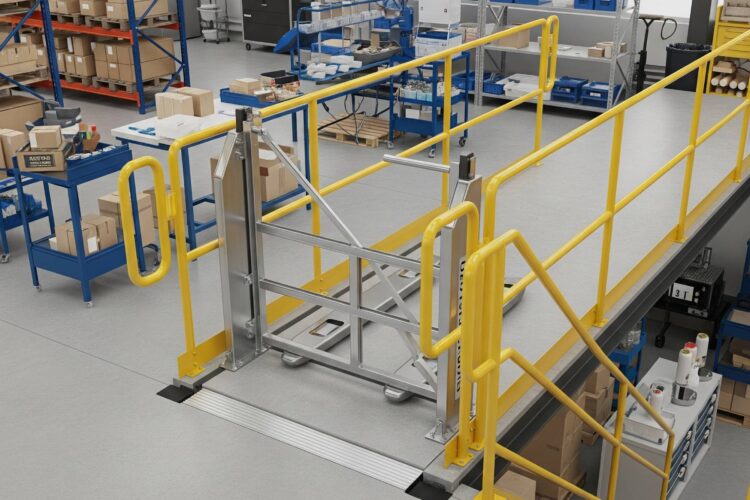
How to Retrofit Existing Mezzanines with Pallet Gates
As mezzanines become increasingly popular in warehouses, factories, and even retail spaces, safe access and loading solutions become critical. One often-overlooked upgrade is the pallet gate — a safety device that protects workers while they load and unload pallets on elevated platforms. If your existing mezzanine lacks this feature, retrofitting it with a pallet gate is a smart investment in safety, compliance, and efficiency.
What Is a Pallet Gate?
A pallet gate, sometimes called a safety gate or mezzanine loading gate, is a mechanical barrier system that allows goods to be safely lifted to and from a mezzanine while preventing falls from the edge. When installed properly, the gate provides a secure opening that only allows access when loading or unloading is actively taking place — then automatically closes off the edge when not in use.
Why Retrofit Your Mezzanine with One?
If your mezzanine was built without a pallet gate, you’re not alone. Many older structures or quick builds didn’t account for elevated edge protection. Retrofitting at this point can still provide significant value:
- Fall Prevention: Pallet gates prevent open-edge exposure during loading and unloading.
- Safety Compliance: They help meet general safety standards even if you’re not governed by OSHA or local codes.
- Efficiency: Workers can handle goods faster with a clearly designated, secure loading zone.
- Insurance & Liability: Installing safety features reduces the risk of accidents and potential claims.
Retrofitting: Step-by-Step Guide
Here’s how to go about upgrading your mezzanine with a pallet gate system:
- Assess the Existing Mezzanine, Start with a safety and structural review of your mezzanine:
- Measure the opening where goods are loaded.
- Determine the floor material and load capacity.
- Choose the Right Pallet Gate Type, There are several styles of pallet gates, each suited to different operations:
- Swing Gates – Simple and budget-friendly; ideal for light-duty applications.
- Counterbalanced “Up-and-Over” Gates – ensure consistent edge protection while allowing smooth pallet access.
- Sliding or Folding Gates – Great for tight spaces or retrofits where overhead clearance is limited.
- Plan Mounting and Modifications, Some retrofits require light structural changes:
- Remove or modify a section of guardrail where the gate will go.
- Confirm that there’s adequate clearance for gate movement.
- Install the Gate, Always adhere to the manufacturer’s specifications or consult a certified installer to ensure proper setup. Key aspects of proper installation include:
- Anchoring the gate to the floor or mezzanine frame
- Ensuring smooth mechanical function (especially for automated gates)
- Verifying the gate closes automatically or with minimal effort
- Train and Inspect, Once installed:
- Train staff on how to use the gate safely
- Conduct a safety check to ensure it operates correctly
- Establish a routine inspection schedule to identify signs of wear, structural damage, or misalignment early.
Common Mistakes to Avoid
- Installing a gate that’s too small for your pallet size
- Leaving open space between the gate and platform edge
- Skipping staff training after installation
- Delaying repairs to damaged or stuck gates
On a final note, retrofitting your mezzanine with a pallet gate is one of the simplest ways to significantly enhance safety without requiring major construction or extended downtime. Speak with our team about selecting and fitting a pallet gate that meets current safety standards.



